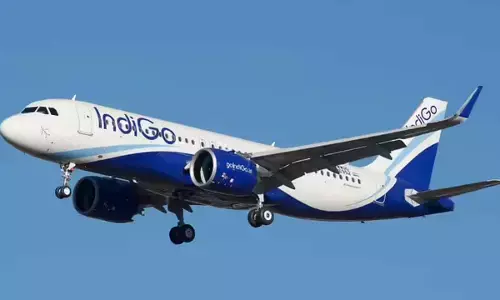Neighbours wooing India

Neighbours wooing India, Jawaharlal Nehru was his own foreign minister and laid the foundation of the country’s foreign policy.
Jawaharlal Nehru was his own foreign minister and laid the foundation of the country’s foreign policy. In changing times, his successors moved on the global scene, and strived to guard national interests. As leaders of a democracy large in terms of population, size and resources, and given its geopolitical location, they could not have done otherwise.
This perceived preoccupation with world affairs at the cost of the domestic issues has often drawn criticism at home. In Hindi film Phir Subah Hogi (1958), lyricist Sahir Ludhianvi lampooned Nehru’s world vision thus: “Chin o arab hamara, Hindustan hamara, Rahane ko ghar nahi hai, sara jahaan hamara, Hindustan hamara.”

It is hardly surprising that Prime Minister Narendra Modi, too, was recently criticised for “playing drums in Japan” when domestic issues demanded his attention. Conversely, he has been berated for currently campaigning in Maharashtra and Haryana when “guns are booming” on the border with Pakistan.
Juggling the two becomes inevitable. Thus, like his predecessors, Modi is making himself at home on the international front on his own terms. He is socially at ease with the world’s leaders. And he is not hesitant to project Indian nationalism and he is in sync with the mood in the world. Nationalism is indeed the flavour of the moment in the world.
In New York and Washington, Modi exuded justifiable pride that India and the United States had “met on Mars”, with satellites from both countries now circling that planet.
He knows that for India to develop, it needs to cooperate with other countries, such as China, Japan and the US, which is why he visited Tokyo and Washington and, in between, hosted the Chinese president, Xi Jinping.
India, in fact, is being simultaneously wooed by all three countries. China does not want India to be part of an international effort to constrain its growth, while both Japan and the US hope that India will help to balance China’s rise.
During Modi’s talks with Premier Shinzo Abe, both sides agreed to deepen their strategic relationship and signed a defence agreement on regional stability. Japan also promised US$35 billion in foreign investment in India, including assistance in developing high-speed trains.
Modi urged Japanese companies, many of which have had difficulties in China in recent years, to consider India a “competitive low-cost manufacturing hub”.
China is taking note, not necessarily friendly. In the aftermath of the Modi visit to Japan, the official People’s Daily Online published an article under the headline, “Japan cannot rely on India to counter China”.
“India, the ‘giant elephant’ of South Asia, operates an independent foreign policy,” it said. “No major powers, including Japan and the US, will succeed in imposing their will on India. India’s prudent foreign policy is decided by India’s interests.”
That, of course, goes without saying. Modi’s first foreign policy acts after assuming power were to strengthen India’s ties with his neighbours, inviting South Asian leaders to his swearing-in. To China’s great displeasure, this included the Dalai Lama, spiritual leader of the Tibetans in exile. Modi then went on his first trips abroad, to Bhutan and Nepal. Pakistan is a different issue that needs separate treatment.
While India cannot be faulted for wanting good ties with neighbours, Modi’s actions should be seen through the lens of China’s increasingly active diplomacy in what India considers its backyard. Before his visit to India, Xi first went to Maldives and Sri Lanka.
Xi’s visit to India was marked by great fanfare, beginning as it did on Modi’s 64th birthday and beginning not in New Delhi but in Gujarat. However, the visit was marred by an incident along their disputed border, with Chinese troops allegedly crossing the line of actual control established after the 1962 war. The Indian response, pro-active, if not tough, yielded results.
During the visit, it was announced that China would invest US$20 billion in India over five years. India, on its part, agreed to build industrial parks for Chinese investors, which would reduce India’s imports from China, thus easing India’s huge trade deficit.
True, India is guarding against having to accept in any form what has been called the “Chinese Monroe Doctrine” — Chinese preponderance in what it regards as its sphere of influence. Subordination to China is certainly not India’s or Modi’s goal. For the same reason, India would not want to be part of the American “pivot” in Asia.
Shinzo Abe’s reassertion of the right of collective self-defence and his relaxation of Japan’s self-imposed arms export ban have opened the path to closer military cooperation with India, including co-production of weapon systems. This was unthinkable some years ago. Much of the spadework was done by former PM Manmohan Singh, a known Japan-phile.
With the change in government, “Abenomics” and “Modinomics” are geared for a mutually beneficial collaboration, forming a major part of India’s “Look East” or “Act East” policy.
The earlier slogan of “Hindi Chini Bhai Bhai” (Indian and Chinese are brothers) may be past, and the current, prolonged flavor is “Hindi-Japani Chai-Chai” (the Tokyo tea party). Their ties already constitute Asia’s fastest-growing bilateral relationship.
Twelve days after Modi met Xi, he was in Washington for talks with President Barack Obama. Indications are that the talks went well. In a joint statement, India for the first time expressed concern over maritime territorial disputes and specifically mentioned the South China Sea, where China’s claims are contested by various countries, including Vietnam and the Philippines.
India’s trading ties with the US are also much stronger than similar ties with China. In fact, India’s trade with China, which stood at US$65.5 billion last year, has been falling while its trade with the US has risen to US$100 billion, with both sides now setting a target of US$500 billion, though without a specific timeline.
After the Modi trip to the US, the People’s Daily Online ran another commentary. This time, its headline read, “India will not be a major player in America’s game of rebalancing the Asia-Pacific”. “No matter how close the relationship between India and the US grows, India will not be a major player on the American team,” the article said. “There is little prospect of India and the US reaching consensus on Chinese issues.” So, India has a ‘certificate’ from China of its ‘independent’ foreign policy.China says it isn’t worried about India-Japan or India-US ties, but saying so suggests that it is concerned.
Overall, that Modi means business, and that he carries it all with multi-coloured headgears – the unique Indian touch no prime minister before has been bold enough to try, should get India more attention.




















